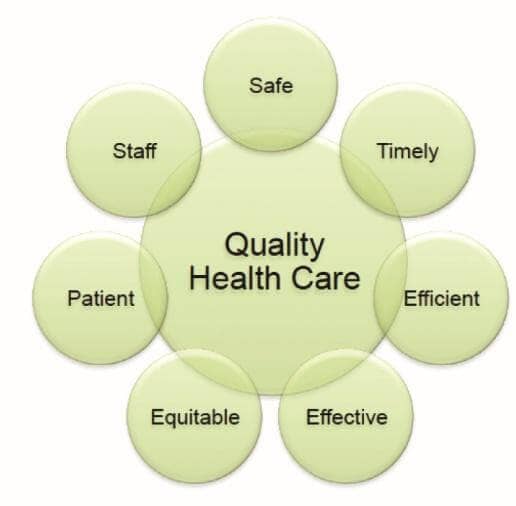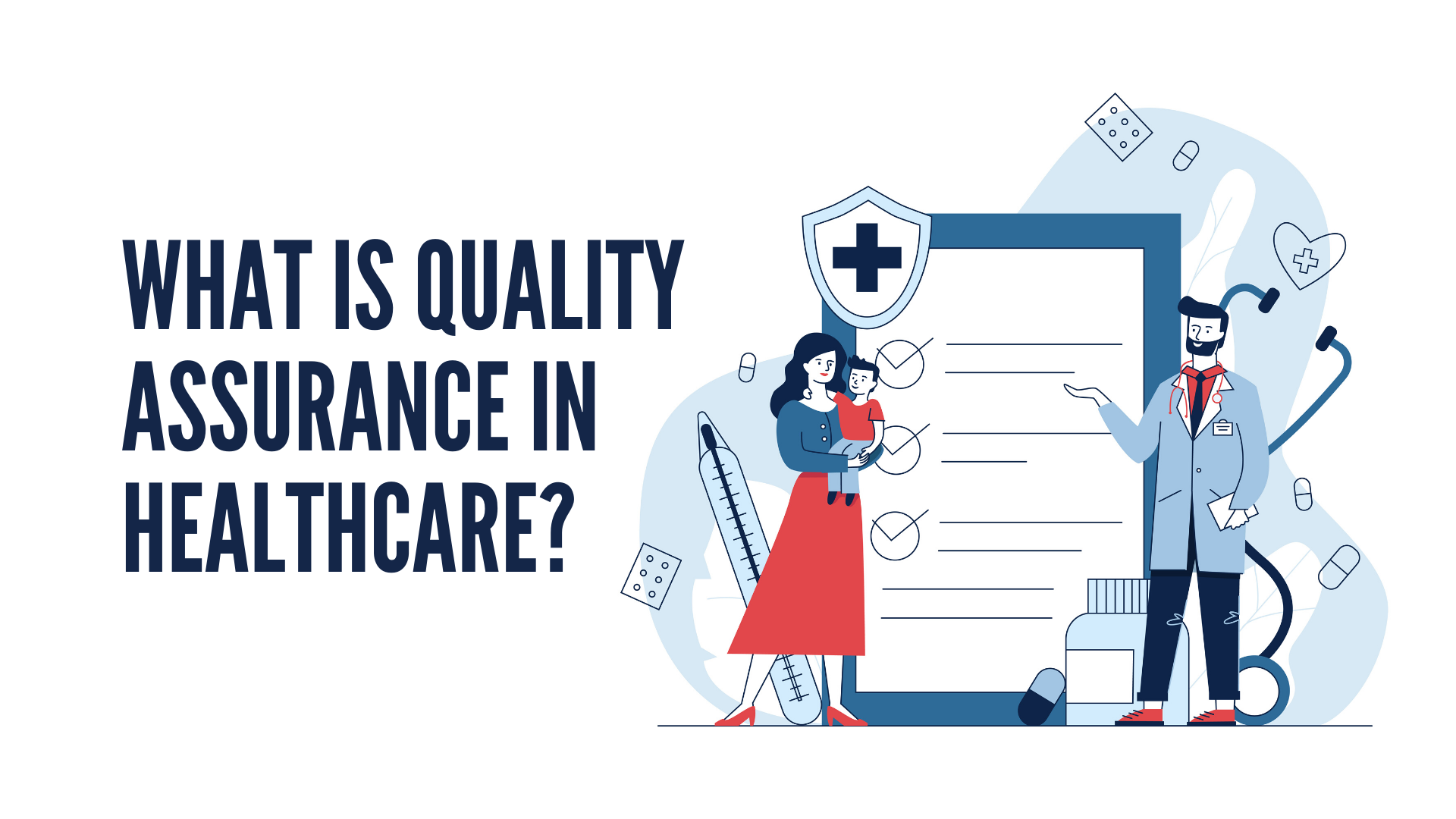Quality assurance in healthcare ensures patient safety and service excellence. It involves systematic monitoring and evaluation of healthcare services.
Quality assurance (QA) in the healthcare sector is key to maintaining high standards of patient care and operational efficiency. QA practices are designed to identify areas of improvement, minimize risks, and ensure that health services meet both regulatory requirements and patient expectations.
Healthcare professionals engage in regular training and audits to uphold quality benchmarks. By implementing rigorous QA protocols, medical institutions aim to enhance their reputation, promote trust, and provide superior healthcare. This continual effort towards quality improvement touches upon every aspect of patient interaction, from initial consultation to treatment and follow-up care, ensuring that every patient’s experience is of the highest quality possible.

Credit: zenbit.tech
Significance Of Quality Assurance In Healthcare
Ensuring Patient Safety
Patient safety is the cornerstone of high-quality healthcare. Quality Assurance measures are critical in identifying and minimizing risks. They prevent potential errors that could harm patients. Through regular monitoring and rigorous protocols, healthcare providers can ensure a safe environment for both patients and staff.- Regular equipment checks and maintenance
- Staff training and competency evaluations
- Critical incident reporting systems
Improving Healthcare Outcomes
Quality Assurance directly contributes to enhanced healthcare outcomes. It involves tracking performance metrics and implementing improvement strategies. This ensures that healthcare services are effective and meet patient needs. Better outcomes translate to improved patient satisfaction and fewer readmissions.| Metrics | Improvement Strategies |
|---|---|
| Patient satisfaction scores | Enhanced staff training |
| Readmission rates | Patient education programs |
| Surgical success rates | Advanced surgical techniques |

Credit: m.youtube.com
Components Of Quality Assurance
Setting Standards And Benchmarks
Healthcare thrives on high standards. Setting benchmarks is the first step in QA. These act as goals for care quality.- Standards: Clear guidelines clinicians follow.
- Benchmarks: Targets to measure performance levels.
Continuous Performance Evaluation
Quality care is an ongoing journey. Continuous evaluation keeps track of progress. It helps find areas needing work.- Regular Reviews: Teams examine performance regularly.
- Feedback Loops: Patient and staff feedback contribute to better services.
- Data Analysis: Numbers and facts guide quality improvements.
Role Of Healthcare Professionals
Responsibilities Of Medical Staff
Keeping patients safe and providing top-notch care are core duties for medical staff. Their roles include:- Assessing patient health.
- Developing detailed care plans.
- Implementing and monitoring treatments.
- Ensuring all medical procedures follow set guidelines.
- Documenting patient data accurately.
- Collaborating with peers for best practices.
- Identifying and reporting any quality lapses.
Training And Continuous Education
Ongoing learning is crucial. Medical staff must:- Attend training programs regularly.
- Stay updated with the latest healthcare developments.
- Participate in workshops and seminars.
- Earn new certifications that complement their roles.
- Engage in peer learning to polish their skills.
Patient Experience And Satisfaction
Measuring Patient Feedback
Understanding how patients feel about their healthcare services stands as a cornerstone for improvement. Regular, effective feedback collection provides insights into patient needs and expectations.- Surveys completed post-visit can gauge satisfaction levels.
- Comments and suggestion boxes invite honest, anonymous tips.
- Interviews and focus groups allow deep dives into patient concerns.
- Digital tools like apps and online platforms streamline feedback gathering.
Enhancing Service Delivery
To truly embrace quality assurance, healthcare services must be agile and responsive. Adapting to patient feedback is key to refining the care experience. Here’s how advancements can take shape:| Focus Area | Action Steps |
|---|---|
| Employee Training | Continual education on patient care for empathetic service. |
| Care Coordination | Streamlining processes for seamless patient journeys. |
| Facility Improvements | Upgrading equipment and amenities for comfort and efficiency. |
| Personalized Care | Adjusting approaches to meet individual patient needs. |
Quality Assurance Methodologies
- Six Sigma: Looks at data to find errors. Aims for near perfection in healthcare processes.
- Lean: Focuses on cutting waste. Makes sure that every step in patient care is valuable.
| Method | Target | Benefits |
|---|---|---|
| Six Sigma | Error Reduction | Improves patient safety and satisfaction. |
| Lean | Waste Elimination | Speeds up care and reduces costs. |
Root Cause Analysis is like being a detective in healthcare. It finds the true source of problems.
- Collect data on the issue.
- Break down the problem, detail by detail.
- Find out why it happened.
- Plan actions to stop it in the future.
Technology’s Impact On Quality Assurance
Health Information Systems
Health Information Systems (HIS) are the backbone of modern medical data management. These systems:- Store patient records securely and efficiently.
- Allow for easy access to patient history by authorized personnel.
- Enable health practitioners to track patient outcomes.
- Support the analysis of large data sets for quality improvement.
Telemedicine And Remote Monitoring
Telemedicine has made healthcare accessible to many. It includes:- Virtual consultations saving patients travel time.
- Remote prescribing of medication when needed.
- Continuous monitoring for chronic conditions.
- Helps in early detection of potential health issues.
- Ensures timely intervention, improving patient outcomes.
- Reduces hospital readmissions and associated costs.
Challenges In Implementing Quality Assurance
Managing Costs And Resources
Balancing the budget while aiming for high-quality healthcare is a significant trial. Fund allocation requires a strategic approach, ensuring every dollar contributes to better patient outcomes. Additionally, resources like state-of-the-art equipment and skilled personnel are crucial but often come with a hefty price tag. Resource management involves:- Optimizing staff schedules to cover all necessary roles
- Investing in training programs for continuous staff development
- Adopting technology that improves efficiency and accuracy
Adapting To Evolving Healthcare Laws
Laws governing healthcare are ever-changing, creating a moving target for QA. Providers must stay informed and adapt swiftly to maintain compliance. Missed updates can lead to legal issues and compromised patient care.| Aspect | Strategy |
|---|---|
| Regulatory Monitoring | Establish a dedicated team for tracking changes. |
| Policy Updates | Regular review and adjustment of internal policies. |
| Training | Continuous education for staff on new regulations. |
Future Trends In Quality Assurance
Integration Of Artificial Intelligence
Artificial Intelligence (AI) is revolutionizing healthcare Quality Assurance. AI equips professionals with powerful tools to identify issues, predict outcomes, and enhance decision-making. The following points highlight how AI is reshaping the Quality Assurance domain:- Predictive Analytics: AI algorithms analyze data to forecast patient health trends and improve care delivery.
- Automation of Routine Tasks: AI streamlines administrative processes, freeing up time for patient-focused activities.
- Enhanced Diagnostics: Machine learning models provide professionals with second opinions, increasing diagnostic accuracy.
Shift Towards Patient-centered Models
Future Quality Assurance places patients at the core of healthcare services. This paradigm shift ensures that care is tailored to individual needs. Key elements of patient-centered models include:- Personalization of Treatment: Customized care plans address specific health concerns and patient preferences.
- Increased Patient Engagement: Engaging patients in their care process leads to better outcomes and satisfaction.
- Cross-disciplinary Collaboration: A holistic approach through teamwork enhances the Quality Assurance process.

Credit: zenbit.tech
Frequently Asked Questions For Quality Assurance In Healthcare
What Are The 4 Types Of Quality Assurance?
The four types of quality assurance are process control, quality control, quality improvement, and quality planning. These ensure products meet set standards.
What Is An Example Of Qa Quality Assurance?
An example of QA (Quality Assurance) is conducting regular code reviews to ensure software development meets specified standards before release.
What Does A Quality Assurance Do?
A quality assurance specialist tests products to ensure they meet safety and quality standards before reaching consumers. They identify defects, provide feedback to production teams, and work to enhance product reliability.
What Does Qa Mean In Medical Terms?
QA in medical terms stands for Quality Assurance. It involves systematic monitoring and evaluation of various aspects of a healthcare project to ensure standards are met.
Conclusion
Quality assurance stands as a healthcare cornerstone, ensuring patient safety and service excellence. This rigorous process cements trust and advances medical outcomes. By embracing continuous improvement, providers deliver care that meets the highest standards. Let’s commit to excellence and safeguard our community’s health every day.








